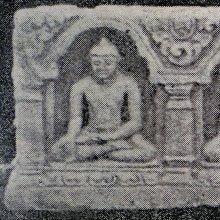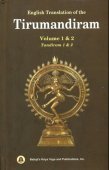Five senses: 1 definition
Introduction:
Five senses means something in Hinduism, Sanskrit. If you want to know the exact meaning, history, etymology or English translation of this term then check out the descriptions on this page. Add your comment or reference to a book if you want to contribute to this summary article.
Images (photo gallery)
In Hinduism
Yoga (school of philosophy)
Source: ORA: Amanaska (king of all yogas): A Critical Edition and Annotated Translation by Jason BirchThe Five Senses are denoted by the Sanskrit term Pañca-Indriya, according to the Amanaska Yoga treatise dealing with meditation, absorption, yogic powers and liberation.—Accordingly, as Īśvara says to Vāmadeva: “[...] [Now], I shall define the nature of that highest, mind-free absorption which arises for those devoted to constant practice. [...] This supernormal knowledge [derived] from the five senses (pañcendriya) consists of his personal experience [as opposed to theoretical knowledge]. By it, the best of Yogins knows of everything that is going on in the universe. [...]”.

Yoga is originally considered a branch of Hindu philosophy (astika), but both ancient and modern Yoga combine the physical, mental and spiritual. Yoga teaches various physical techniques also known as āsanas (postures), used for various purposes (eg., meditation, contemplation, relaxation).
See also (Relevant definitions)
Partial matches: Te.
Query error!
Full-text (+155): Pancendriya, Shrotradi, Kamaguna, Panchagun, Pancaguna, Jnanemdriya, Vitayapancakam, Aintatakku, Aiyunarvu, Gyanendriy, Indriyagrama, Pancendriyajnana, Samjnaskantam, Indriyatva, Supernormal knowledge, Gunasharira, Camnakantam, Patu, Pancendriyatva, Ararivuyir.
Relevant text
Search found 168 books and stories containing Five senses, The five senses; (plurals include: Five senseses, The five senseses). You can also click to the full overview containing English textual excerpts. Below are direct links for the most relevant articles:
Dhammasangani (by C.A.F. Rhys Davids)
Chapter III - Categories Of Form Under Triple Aspects < [Book II - Form]
Chapter IV - Categories Of Form Under Fourfold Aspects < [Book II - Form]
Mahabharata (English) (by Kisari Mohan Ganguli)
Section CCII < [Mokshadharma Parva]
Section CXCV < [Mokshadharma Parva]
Section XXVII < [Anugita Parva]
The Nervous System in Yoga and Tantra (Study) (by Ashok Majumdar)
8. Psychological explanation of the Five Bhutas < [Chapter 6 - Fundamentals of Ayurveda]
14. Causes of derangement of Dosas < [Chapter 7 - The Physiological and the Pathological concepts of Tridosha Theory]
2. The Samkhya system < [Chapter 6 - Fundamentals of Ayurveda]
Samkhya thoughts in the Mahabharata (by Shini M.V.)
Sūkṣma Śarīra < [Chapter 4 - Sāṃkhya thoughts in the Śānti-parva of Mahābhārata]
Prakṛti in the Śāntiparva < [Chapter 4 - Sāṃkhya thoughts in the Śānti-parva of Mahābhārata]
The four manners of life < [Chapter 3 - The Philosophical Tenets in the Śānti-parva]
Harivamsha Purana (by Manmatha Nath Dutt)
Chapter 9 - The Work of Dissolution Described < [Book 3 - Bhavishya Parva]
Chapter 24 - The Fight between Madhu and Vishnu < [Book 3 - Bhavishya Parva]
Chapter 23 - The Beginning of Fight between Devas and Daityas < [Book 3 - Bhavishya Parva]
Dhyana in the Buddhist Literature (by Truong Thi Thuy La)
2.2: (1b) The Five Hindrances (Nīvarana) < [Chapter 2 - The Dhyāna as depicted in Hinayāna Literature]
Related products

.jpg)
